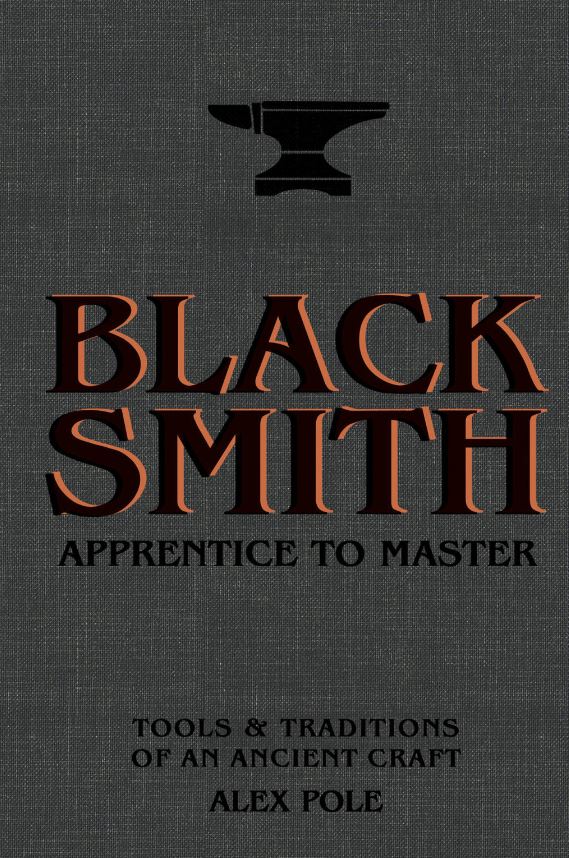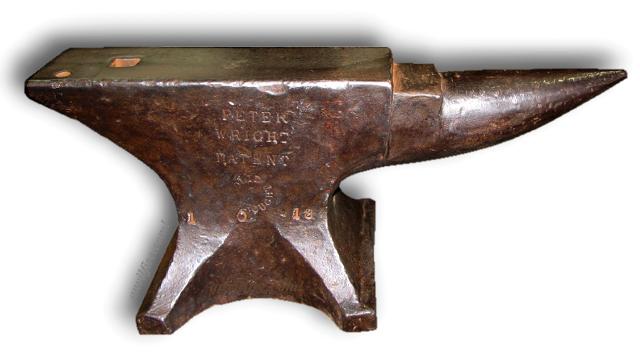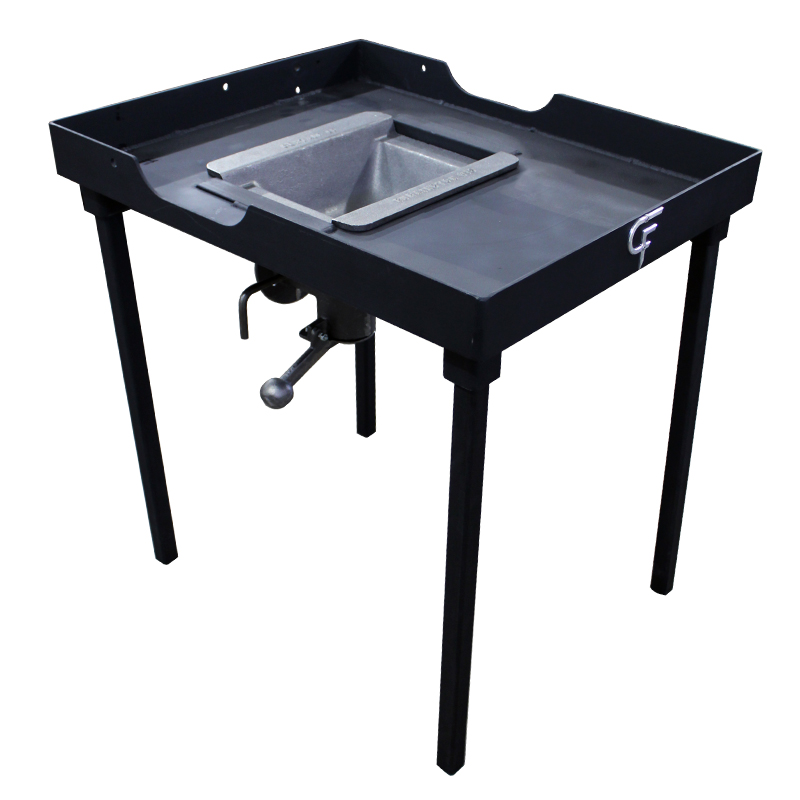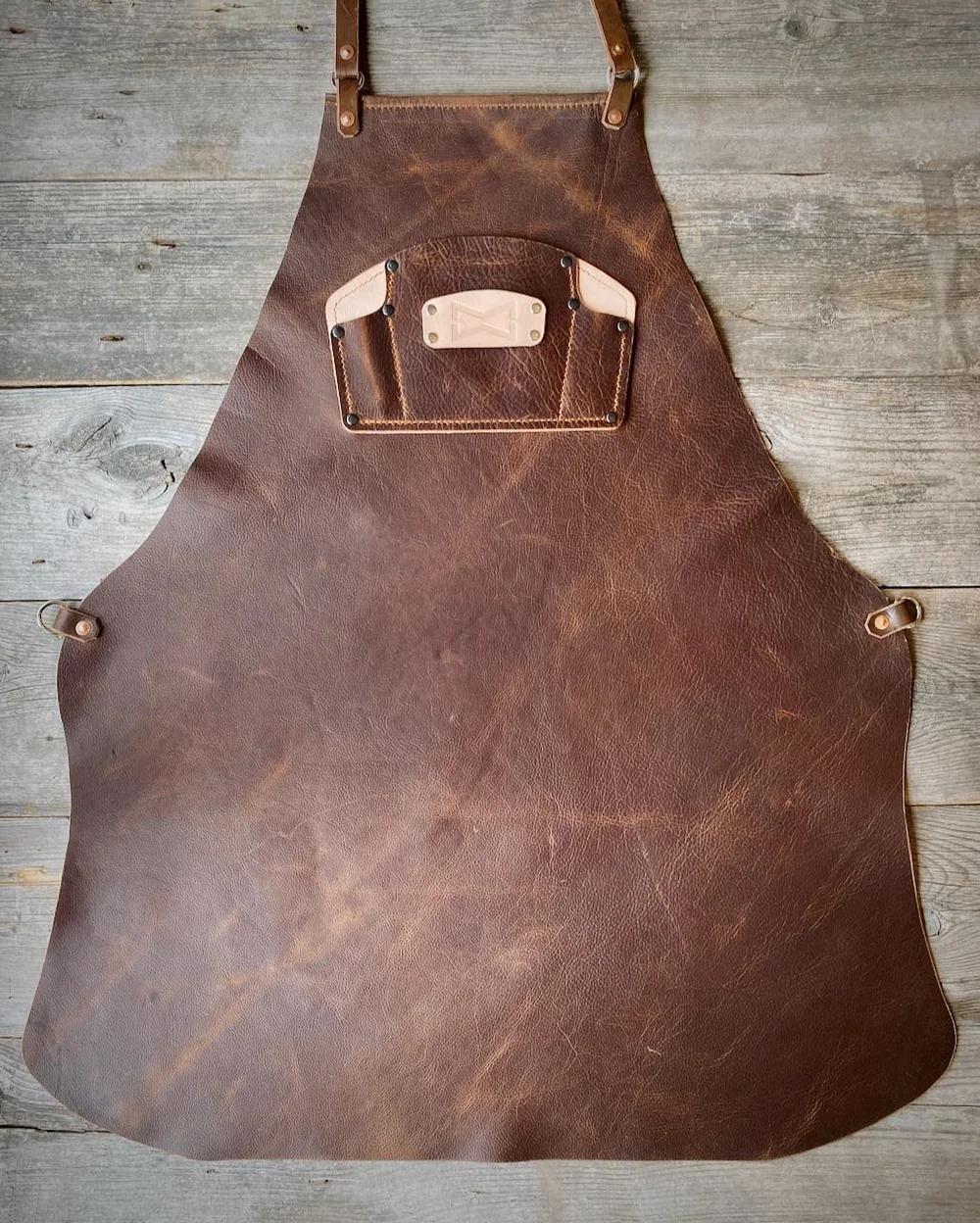Blacksmithing is an ancient trade that is growing in popularity. Learning to blacksmith is easier to start than you think, yet is a skill that can take a lifetime to master. To learn blacksmithing you will need to start here:
TL;DR – How to Get Started in Blacksmithing
- Take a Class First – Find a local blacksmithing class to safely learn the basics and see if the trade is right for you.
- Learn from Books & YouTube – Build your foundational knowledge through trusted books and reputable blacksmithing channels.
- Gather Essential Tools – Start with a forge, anvil, hammer, tongs, and safety gear before diving into more specialized equipment.
- Know the Terminology – Understanding key terms like drawing, quenching, and upsetting is crucial to mastering the craft.
- Safety First, Always – Blacksmithing involves high heat and heavy tools—use proper PPE and take shop safety seriously.
What is Blacksmithing?
Blacksmithing is the art of shaping metal into a desired form with the use of various tools, fire, anvils, and pure will. It is a skilled trade that has been around since the beginning of time. Each village and/or town had a local blacksmith that they depended on to create anything from farm tools to kitchen utensils.
Blacksmithing is a hot and dirty job that takes discipline. It is a physically demanding job that can also be very rewarding.
Let’s dive into how you can learn to blacksmith today!

What is a blacksmith?
A blacksmith is a person that uses various tools and heat to shape metal and create different objects. It is known as “forging” metal. By heating the metal to a red hot or even yellow temperature, the smith can sculpt, bend and upset the metal in any way they see fit to produce the final product.
They are called blacksmiths due to the black scale that builds up on the outside of the metal during heating. Smith is an old English word that means “to strike”.
Blacksmiths can produce several different objects. They are known more for their functional items such as nails, hammers, farming tools, and cooking utensils. But smiths can also create beautiful works of art that are more ornamental yet still functional. This can consist of gates, light fixtures and railing and so much more. Sometimes it can be purely decorative such as sculptures.
The blacksmith’s workshop is also referred to as the smithy, the forge, or just simply the Blacksmiths Shop.
Where can you learn Blacksmithing?
While blacksmithing is something you can learn at home, I believe the best way to learn anything is with hands-on experience from a person that knows what they are doing. There are just some obstacles that are difficult to overcome on your own.
One of the biggest things to think about is safety. Blacksmithing is a dangerous trade and safety needs to be your top priority. Being under the supervision of a professional is the best way to learn not only the trade but how to do it as safely as possible! We will cover safety more later on.
Being in the same shop with someone that can answer your questions in real-time is priceless. That is why I am putting this section early in this list. Before you go out and invest in tools and such, it is probably a good idea to see if you even enjoy blacksmithing.
As I said, it is a hot, dirty, and physically demanding trade. It is not for everyone, and that is okay. I would encourage you to find a blacksmith near you and take a class.
To easily find a blacksmith near you, go to our interactive map and search your state. Don’t worry. It will open in a new tab, leaving this article here for you to refer back to.

With that being said, you do not need to take a class to learn blacksmithing. It is something you can learn on your own in your shop. we will cover some good materials to learn from in the next section. I just want to be clear that it is in your best interest to learn the fundamentals of blacksmithing under the supervision of an experienced smith.
How to learn the fundamentals of blacksmithing
There are countless resources you can look into to learn the fundamentals of blacksmithing. Between books and YouTube videos, there is more than enough information out there to get you smithing with the best of them.
The downside to all this information out your fingertips is that you have all this information at your fingertips. It can be hard to navigate through the noise and find reliable resources. Not everyone teaching this stuff online should be teaching it. Let me share some resources with you in hopes of leading you in the right direction.
Books
Nothing better than a good book. What I like about books is that they are easy to carry around and have in your shop. No need to worry about your batteries or WIFI. Here are some books to get you started on learning how to blacksmith.

One book that has risen in popularity very quickly is “BlackSmith – Apprentice to Master” Available in both Kindle and hardcover, this book is highly recommended to any blacksmith.
Here are some other great books to look into. This list was curated by Mark over at BegintoBlacksmith.com.
- The Home Blacksmith: Tools, Techniques, and 40 Practical Projects for the Blacksmith Hobbyist
- The Everyday Blacksmith: Learn to Forge 55 Simple Projects You’ll Use Every Day
- A Modern Guide to Knifemaking: Step-by-step instruction for forging your own knife from expert bladesmiths
- The DIY Blacksmithing Book
- The Backyard Blacksmith
YouTube Channels to Subscribe to
If we are being honest, YouTube videos are probably the go-to resource for any kind of learning today. If you want to learn about a topic, even blacksmithing, YouTube is usually the first place we go. Here are 3 of my favorite blacksmithing YouTube channels.
- Black Bear Forge is easily my favorite. With tons of instructional videos, you can get stuck for hours watching this channel.
- Rigoni Ironworks. This channel is more visual. There isn’t any script or anything. Just up close and personal blacksmithing, allowing you to watch the processes.
- Christ Centered Ironworks is a great channel that not only teaches blacksmithing but also gets into the business side of things if that is what you are into.
Bonus channel: Alec Steele. If you do any search on blacksmithing, Alec is likely to come up. With almost 2.5 million subscribers, Alec Steele has an entertaining channel and he is not afraid to push the limits of his skills.
What basic tools do you need to learn how to blacksmith?
Forge
Let’s start with the forge. The forge is the furnace that you place your metal stock into in order to heat up before hammering. A forge can run you anywhere from $150-$2000. It all depends on the quality, which is based on its ability for it to get up to temperature quickly, maintain that temperature, and the type of flame it produces.
There are also a couple of different options you can choose from when it comes to fuel sources. Gas forges and Coal forges. Each has its pros and cons.
Here are a couple of great starter options. My suggestion would be to add fire brick to the ends of an open forge so it can hold the heat better.
Anvils
Next, let’s talk about an anvil. An anvil is a metal block with a flattened surface by which an object can be struck. When we think of an anvil, we think of the traditional style such as the Peter Wright.

But this is not the only style. There are countless other styles consisting of various-shaped horns and surfaces. Each one has a unique purpose. An anvil doesn’t even have to have a horn.
It can just be a block of metal. Square or round, as long as it has a hard surface, it is fair game to use for blacksmithing.
Finding an old anvil can be tough. Both in the ways of tracking one down and also tough on your wallet. There are plenty of suppliers that cast brand new anvils. Going this route can be a great option since you know the top will be flat and the corners will be intact.
Here are a couple of places to look.
Hammers
Impossible to be a blacksmith without a hammer. Correction…. hammers.
Of course, you can get by with just one hammer, but there are different styles of hammers that are designed to move metal in a specific way. Probably the two most used hammers in the shop are a cross pein hammer and a ball pein hammer.

Cross Pein Hammer – Also known as the blacksmith’s hammer, this hammer has a flat face that allows the smith to flatten stock or bend it around the horn of the anvil. On the opposite side of the flat, the is a horizontal peen. This part allows the smith to draw out the stock and spread the metal in different directions.
Ball Pein Hammer – The ball pein hammer also has a flat face on the front, but the opposite side has a ball-shaped peen. This round surface can spread metal and add texture to the piece the smith is working on.
You can find these hammers on many different websites. One being CentaurForge.com
I also encourage you to find hammer makers on Instagram.
Tongs
Don’t count on holding that piece of hot metal with glove-protected hands. While with longer pieces, that is possible, tongs are one of those tools in the blacksmith shop that you can’t have enough of. Like the anvils and hammers, there is a tong for every piece of stock you can think of.

As a blacksmith, you will likely end up making your own tongs. That is what blacksmiths do. They make tools. But to get started, I would suggest buying a set of tongs.
A great starter set of tongs can consist of Flat jaw tongs, v-bit tongs, scrolling tongs, and pick-up tongs.
Look at websites like Texas Farrier Supply, Centaur Forge, and even Amazon for blacksmithing tongs.
Finishing Supplies
After you finish forging your masterpiece, you need a way to preserve it and protect it from the elements. You can do that in a number of ways.
Here is an excellent video from Black Bear Forge going over a lot of different options to finish your work. I encourage you to check it out.
Learn the Terminology of Blacksmiths
Speaking Blacksmith starts with learning the terms below.
Forging
The shaping of metal using force
Drawing
Metalwork process where metal is forced or pulled through a piece of the anvil; used to make wire, bars, tubes, etc.
Piercing
Producing a hole in the workpiece
Quenching
The rapid cooling of a metal piece; typically to harden steel
Tempering
Making the metal “tougher” by heating or quenching it multiple times
Swaging
Forcing metal into or through a cavity to deform the metal into a different shape.
Upsetting
Process of making metal thicker in one dimension by shortening the other
Bending
Bending is the process of forming a curve or a bend in a piece of metal.
Finishing
Finishing is the process of working a metal or other material into its final shape. Finishing includes polishing and putting all the final touches on the product.
Take ALL Safety Precautions!
If safety isn’t top of mind for you, learning to blacksmith is probably not for you. Getting hurt can be easy in the blacksmith shop if you are not careful. Working with fire, hot steel, and heavy tools is a dangerous job. This is why you must take all the safety precautions you can. Be sure to read the safety documentation that comes with your equipment and tools, but below is a list of basic safety concerns and ways to prevent them.
PPE (Personal Protective Equipment)
safety glasses – Flying sparks and pieces of metal are an obvious danger to one’s eyes. Always wear safety glasses while working in the shop.
respirator – A lot of times, microparticles can be airborne in your shop. Such as when you are grinding metal. These micro particles of steel can be harmful to your lungs. Use a respirator with the proper filter to protect yourself. My favorite is the 3M quick latch design you see pictured below.
In most cases, a particulate filter such as the 3M P100 is sufficient for what blacksmiths deal with. But if dealing with any vapors or chemicals, research the proper mask for the job.
Ear Protection – There are a lot of loud noises in the workshop. Loud hammer blows, grinding steel, and power tools can all contribute to hearing loss in the future. Use hearing protection as often as possible while smithing.
Aprons – Aprons are a common clothing choice in a blacksmith shop. Aprons are not only handy to hold your tools in a variety of pockets, but it is an essential layer between yourself and the hot steel or iron. Sparks are flying at you all day in a blacksmith shop, so it only makes sense to add a layer of protection that helps prevent burning holes into your clothes. (FYI: wear non-synthetic clothing)
Here are a few options when it somes to aprons.
Boots – Boots are an important piece of clothing not to overlook. As a blacksmith, you are on your feet all day and the last thing you want is your feet and back hurting at the end of a long day. Find a boot that is comfortable and that is enjoyable to wear.
Also think about the fact that you are around metal, heavy hammers, and all kinds of things that can fall on your toes. Steel toe boots are a must!
Shop Safety
Fire Extinguisher – This should go without saying, but the risk of fire is really high in a shop that consists of things that are made to reach a couple of thousand degrees. Always have an accessible fire extinguisher nearby and make sure they are up to date.
First Aid – Cuts, scrapes, and other injuries are hard to avoid in a blacksmith shop. It is very important to keep bandages, ointments and even blood clotters nearby.
Proper Ventilation – Especially if your forge is inside, proper ventilation is imperative. This is something that can NOT be overlooked. Without proper ventilation, you run the risk of carbon monoxide poisoning. Build a hood vent over your forge to pull out any smoke and to keep your shop from becoming oxygen-deprived.
Stay hydrated – Working as a blacksmith is a hot, sweaty, and hard work. Drink more water than you think you need because dehydration can sneak up on you.

Learn Blacksmithing by Heating up some metal and hammering it
To sum things up, hands-on experience is the best way to learn. No amount of videos or books will prepare you for how blacksmithing feels.
Most experienced smiths will make the concept of smithing look easy. They will make a leaf and explain to you every step of the process. But until you have actually done it on your own, you realize just how difficult it is. It is odd to say, but sometimes you will just stare at the metal on your anvil and wonder how you make your hammer do what your mind is thinking.
So will all that being said, I hope you find great joy in your new journey as a blacksmith. Whether it be just as a hobbyist or as a full-time profession, take pride in knowing that you are a part of a community that is dedicated to preserving this ancient art.
Don’t be afraid to ask questions. We are all in this together!
If you are an instructor of blacksmithing or know one, please consider signing up for a listing here on Learnmake.us. It is free and you are in full control of your listing.










